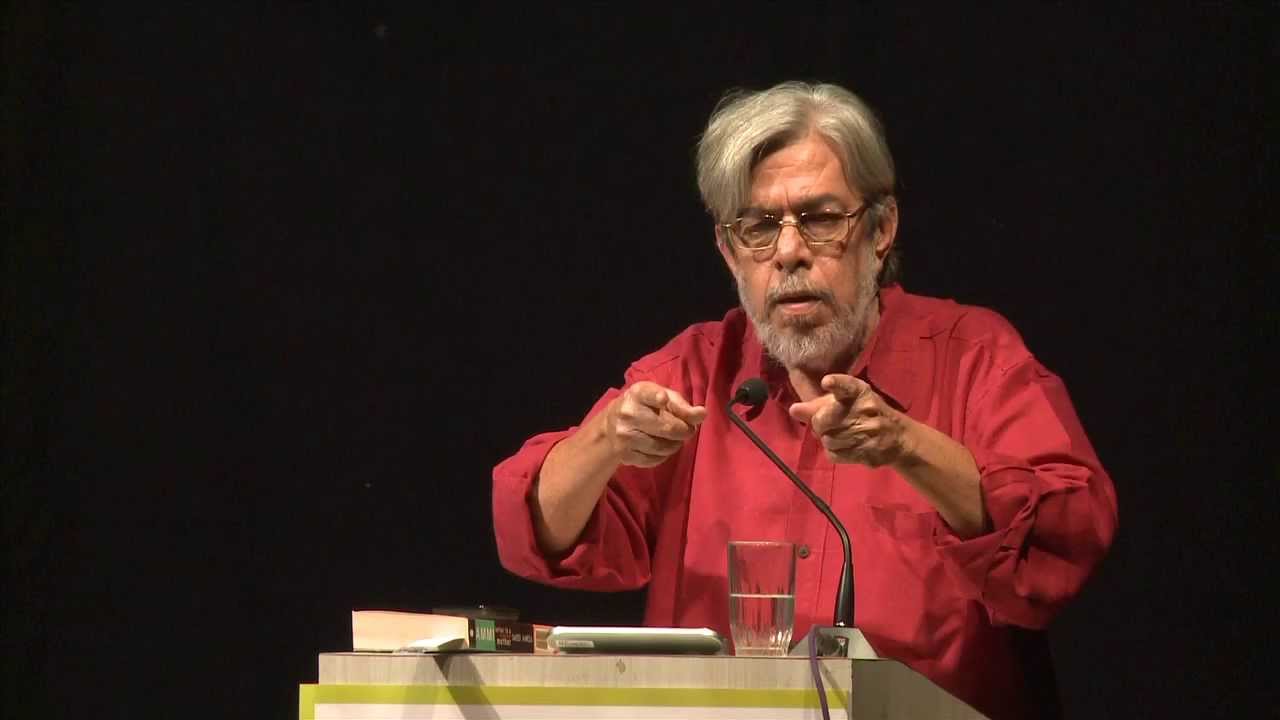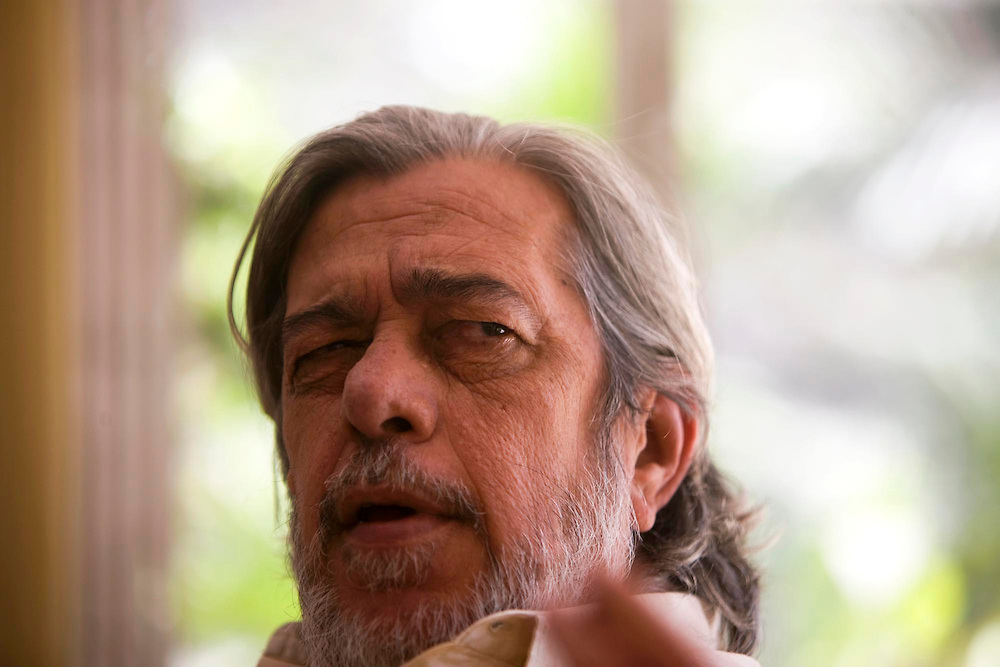In a dark night top angle shot of the 1980 Hindi movie, Albert Pinto Ko Gussa Kyoon Aata Hai shows the protagonist, a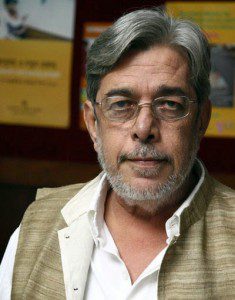 car mechanic named Albert Pinto, and his girlfriend, a private secretary named Stella D’Costa, stuck on the road as their car breaks down on a return trip after a dinner. The car is an expensive model and attracts a group of men passing by. They surround the car and admiringly touch its body, shooting various questions at Albert, who is struggling with the innards of the front bonnet in a desperate attempt to avert questions as the car belongs to one of his customers of the garage. Along with the crowd’s excitement and curiosity about the ownership of the car and its passengers, Albert’s growing irritation and an uncomfortable girlfriend form a live action portrayal of the class contradictions and desires reign in the urban milieu. Classes, their contradictory interactions, and humanism squashed by the societal institutions forms the core of filmmaker Saeed Akhtar Mirza’s oeuvre.
car mechanic named Albert Pinto, and his girlfriend, a private secretary named Stella D’Costa, stuck on the road as their car breaks down on a return trip after a dinner. The car is an expensive model and attracts a group of men passing by. They surround the car and admiringly touch its body, shooting various questions at Albert, who is struggling with the innards of the front bonnet in a desperate attempt to avert questions as the car belongs to one of his customers of the garage. Along with the crowd’s excitement and curiosity about the ownership of the car and its passengers, Albert’s growing irritation and an uncomfortable girlfriend form a live action portrayal of the class contradictions and desires reign in the urban milieu. Classes, their contradictory interactions, and humanism squashed by the societal institutions forms the core of filmmaker Saeed Akhtar Mirza’s oeuvre.
Mirza, who is calling himself the Leftist Sufi, emerged as a prominent figure in the Indian parallel cinema movement in the 70s and 80s with his path-breaking socio-political dramas like Mohan Joshi Hazir Ho! (1984), Albert Pinto Ko Gussa Kyoon Aata Hai (1980) and Salim Langde Pe Mat Ro (1989). Born in 1943 in Mumbai, Saeed Akhtar Mirza was brought up in the colors and smells of cinema as his father, Akhtar Mirza was an award-winning screenwriter in Hindi film industry. Saeed Mirza exposed to the cosmopolitan cityscape of Mumbai at a younger age and the city, along with its art, literature, and poetry, shaped his sensibility and aesthetic. Being a keen-eyed storyteller by nature, Saeed Mirza was aware of the underbelly of the metropolis, which is thriving with pickpockets, policemen, sex workers, drug dealers, middlemen, goons, smugglers, taxi drivers, and an N number of deplorable. Mirza came across a thousand stories wandering unattended and in search of a medium in these people as he was blossoming into a budding writer.
John Abraham, Portrait Of A Lucid Messiah
After a short period in the advertising industry, Mirza left his beloved city of deplorable to enroll in Film and Television Institute of India (FTII), Pune. He encapsulated the suppressed anger and desperation of the underbelly of the city before leaving it for a lifelong love affair with cinema, and those seeds unearthed and sprouted in full fury once he tamed the cinematic storytelling techniques at the institute. The FTII in the 70s was a melting pot and Saeed Mirza landed in the midst of radical and independent filmmakers and thinkers.
The year 1978 marked Mirza’s directorial debut with the movie, Arvind Desai Ki Ajeeb Dastaan, which was produced by Yukt Film Co-operative founded by Mirza, Hariharan, Mani Kaul and some like-minded friends. In accordance with the historic resonance of the 70s, the movie depicted an idealistic youth and his predicaments with a multi-layered, exploitative, feudal society. In his second movie, Albert Pinto Ko Gussa Kyoon Aata Hai in 1980, the young protagonist continued his search for existential derivatives in a putrefied society functions strictly on the lines of class distinctions. Mirza stripped out the invisible lines of classes present and shadowed all the human interactions with immaculate urgency and dexterity. The city of Bombay played both as the backdrop of the movie and a central character in it.
Mani Kaul; Interludes Of A Wind Chime And An Invisible Man
In 1984, Mirza turned up with a hard-hitting satire, Mohan Joshi Hazir Ho! which depicted an old couple’s unending legal battle to claim the maintenance expenses for their dilapidated building from the landlord. Through a group carefully caricatured characters, Mirza knitted the plight of the urban middle class who churned out by the nexus of lawyers, real estate developers, and middlemen. The movie was a strong critical statement on the Indian judiciary and the ever expanding cleft between justice and law. Mirza’s most intense political take on the contemporary Indian scenario, Salim Langde Pe Mat Ro, which came out in 1989, focused on the Hindutva trend came into prominence since the late 80s. In the backdrop of a society divided on the basis of religion and thriving communal tension, Mirza explored a young Muslim youth’s search for religious and national identity, which in turn evolved as a quest for the meaning of life. Salim Langde Pe Mat Ro marked a dynamic shift in Mirza’s style as well as the soul of his beloved metropolis, Mumbai.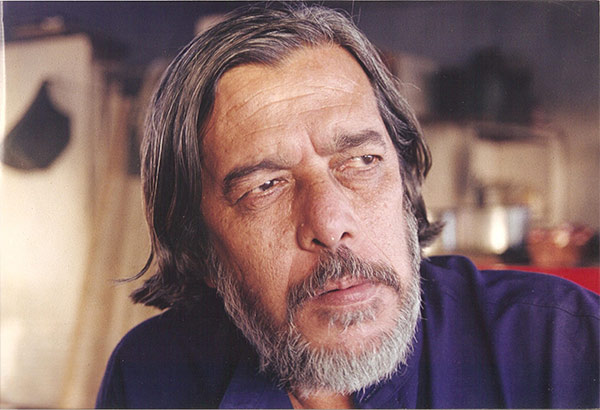
After his 1995 movie Naseem, Mirza announced his retirement from filmmaking, citing the death of poetry in the country. In his words, the movie became an epitaph for the city which lost its charm, poignancy, and harmony after the Bombay riots. In 2009, Mirza returned to the director’s chair with Ek Tho Chance, a kaleidoscopic portrayal of his evergreen muse, Mumbai. Besides the feature films, Mirza made two path-breaking television series, Nukkad (Street Corner, 1986) and Intezaar (Wait, 1988, all produced under a production company he founded in collaboration with filmmaker Kundan Shah. Mirza’s TV series, Yeh Hai India Meri Jaan, a visual travelogue, captured India with all its diversity through his travel experiences with people, places, colors, smells, and tastes.
The Cloud Capped Star, Glimpses Of Ritwik Ghatak’s Cinema
From his debut film, Mirza was concerned about the deplorable in the society and the class-based power equations that control human relationships. Eventually, he developed a visual language that positioned itself somewhere between Bressonian and Ken Loachian. Almost all the contradictory forces in the metropolitan cityscape of Mumbai are captured by Mirza’s evoking visuals, that use extensive character tracking and a combination of wide and middle shots to present the inhabitants connected to their habitat. As a filmmaker, Mirza never went for a make-believe approach and whether it’s the courtroom drama in Mohan Joshi Hazir Ho! or the garage scenes in Albert Pinto Ko Gussa Kyoon Aata Hai, he captured life and personas as it is. Mirza’s polemical stand on social issues and human conditions often makes these movies, a strong socio-political statement of middle-class Indian life in the 70s and 80s.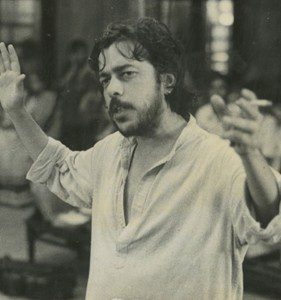
Cinema was primarily a medium of telling stories for Mirza, who is a storyteller at heart and his techniques, narrative, and characterization are in concordance with the rich storytelling tradition of India. While picking up the stories he wanted to tell, Mirza was keen to capture the people lost in between the isles of power and the class differences. His free-flowing camera penetrated ghettos, gullies, slums, tin-roofed houses, and into the mindscapes of grumpy individuals, and returned with the immortal spirits of survival. These qualities made him the only leftist Sufi making movies in India. Besides his cinematic endeavors, Mirza wrote two novels, Ammi: Letter to a Democratic Mother (2008) and The Monk, the Moor & Moses Ben Jalloun (2012). Even though the mainstream media have been eager to appropriate his bizarrely long, full sentenced titles as their headlines, his movies and their significance left behind. Those movies are the epitaph of a city, its people and its beloved filmmaker who captured life with such keenness. When asked about his novel, Ammi: Letter to a Democratic Mother (2008), Mirza once said, “Part essay, Sufi tale, travelogue, diatribe, film script, love story, and a combination of history and polemics also,” a pocket-sized description that fits well with his movies.
Written By: Ragesh Dipu

